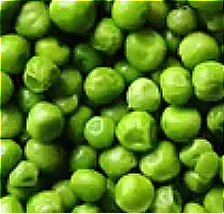Pisum Sativum Seed Extract is a natural product obtained from the pea plant, Pisum sativum L. botanical family , Leguminosae.

The name describes the structure of the molecule:
- "Pisum" indicates the genus of the plant from which the extract is derived. It refers to the pea genus.
- "sativum" is the specific name of the plant and indicates a cultivated or domesticated species.
- "Seed Extract" indicates that it is an extract derived from the seeds of Pisum sativum plant.
Description of raw materials used in production and their functions.
- Pisum sativum (Peas). The primary plant from which the extract is derived. Peas contain various phytonutrients and bioactive compounds.
- Solvents. Such as water or alcohol, used to extract the desired compounds from the plant.
- Preservatives. Often added to extend the shelf life of the extract.
Form. It can vary, but it's usually a liquid or a gel depending on the concentration and extraction process.
Color. Ranges from colorless to pale green, depending on the concentration and the part of the plant used for the extract.

Step-by-step summary of industrial chemical synthesis process.
- Pea preparation. Peas are washed, cleaned, and readied for extraction.
- Extraction. The peas are submerged in the chosen solvent for a set period to allow the extraction of desired compounds.
- Separation. After extraction, the solution is filtered to remove any solid particles.
- Concentration. The extracted liquid is then concentrated, if necessary, to achieve the desired concentration of the extract.
- Addition of preservatives. If needed, preservatives are added to extend the extract's shelf life.
What it is for and where
Cosmetics
Skin conditioning agent. It is the mainstay of topical skin treatment as it has the function of restoring, increasing or improving skin tolerance to external factors, including melanocyte tolerance. The most important function of the conditioning agent is to prevent skin dehydration, but the subject is rather complex and involves emollients and humectants that can be added in the formulation.
Skin protectant. It creates a protective barrier on the skin to defend it from harmful substances, irritants, allergens, pathogens that can cause various inflammatory conditions. These products can also improve the natural skin barrier and in most cases more than one is needed to achieve an effective result.
CAS 90082-41-0
EC number 290-130-6
Commercial Applications
Cosmetics and Skin Care. Pisum sativum extract is known for its antioxidant and anti-aging effects. It can stimulate collagen production, enhancing skin elasticity and reducing wrinkles.
Hair Care Products. Owing to its protective properties, it can be incorporated into hair products to guard and fortify hair structure.


![]() Pisum Sativum (Pea) Seed Extract
Pisum Sativum (Pea) Seed Extract